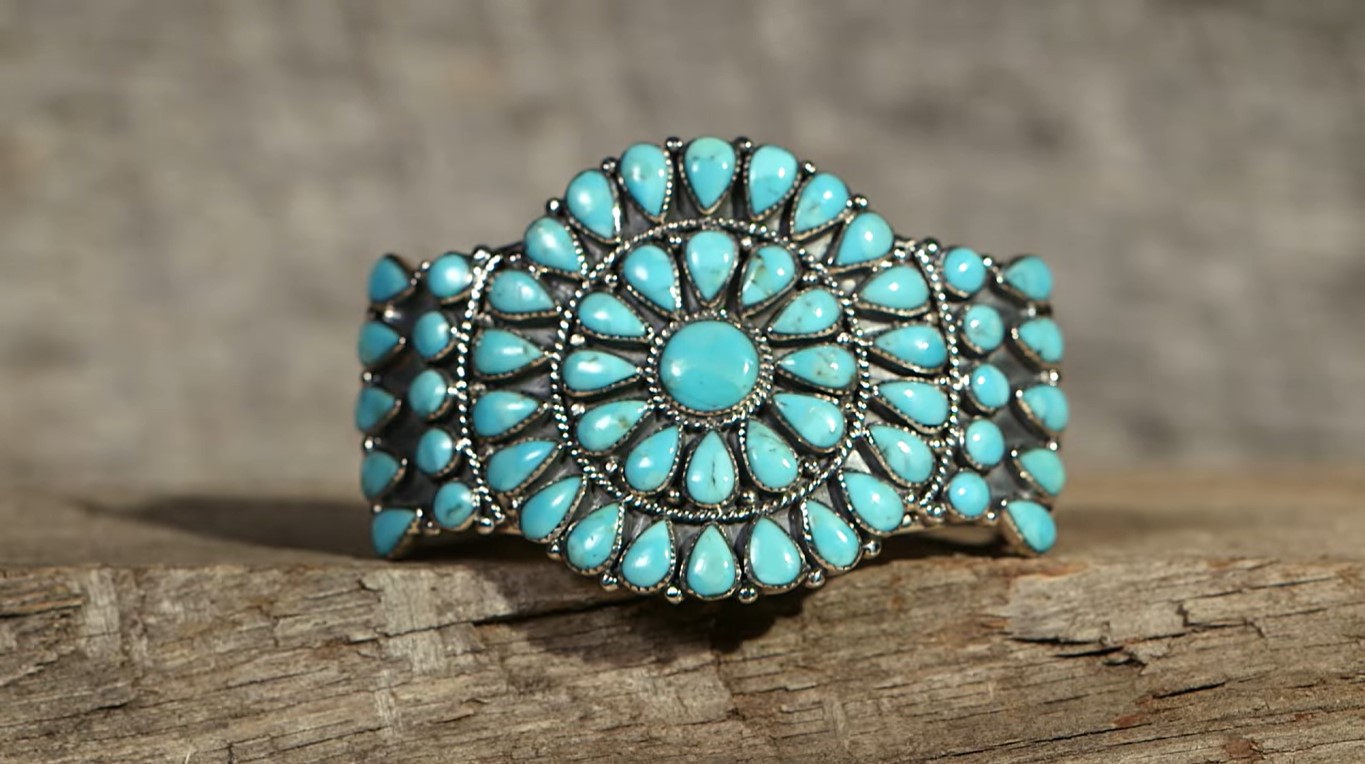
The timeless beauty of turquoisejewelryhas transcended cultural and geographical boundaries, leaving an indelible mark on the world of adornment.
Few gemstonespossess the captivating allure and enduring charm that turquoiseexudes.
Revered for its mesmerizing hues reminiscent of serene skies and tranquil waters, turquoise has been cherished by civilizations throughout history.
From ancient civilizations to contemporary fashion, the rich history and symbolic significance of turquoise make it a gemstone that transcends mere aesthetics.
Check out the different pieces of turquoise jewelry below that exude timeless beauty and are products of excellent craftsmanship.
Handcrafted Turquoise Jewelry Pendants
Turquoise is the birthstone for the month of December and the planetary stone for Aquarius.
In the U.S., it’s mined in Arizona and New Mexico, with the costliest specimens coming from countries in the Middle East, such as in Afghanistan and Iran.
Most of the turquoise used in the jewelry on this site is from the southwestern areas of the United States.
Below are original handcrafted turquoise jewelry pieces made with sterling silver, gold, and unique freeform cabochons (prices indicated are all in U.S. Dollar):

1. Designer Turquoise Pin/Pendant with Spectrolite
- price: $450
- size: 1 1/8" x 2 1/4"
- set in sterling silver
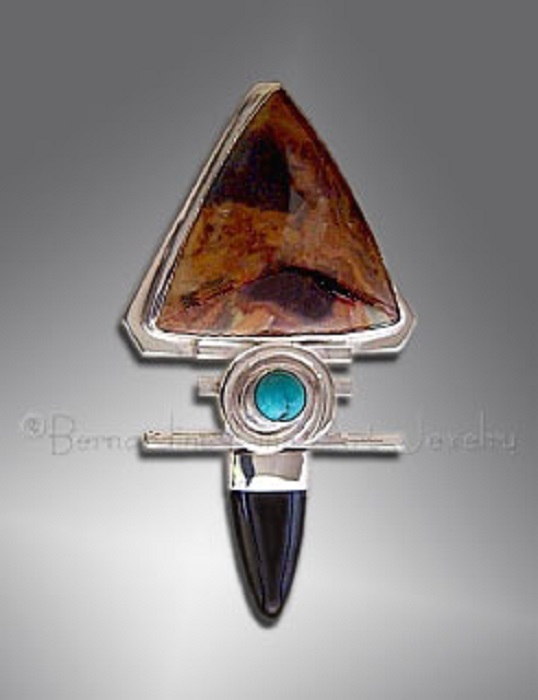
2. Turquoise and OnyxPin/Pendant
- price: $315
- size: 1 1/8" x 2"
- set in sterling silver
- comes with a huge brown pietersite with black hues
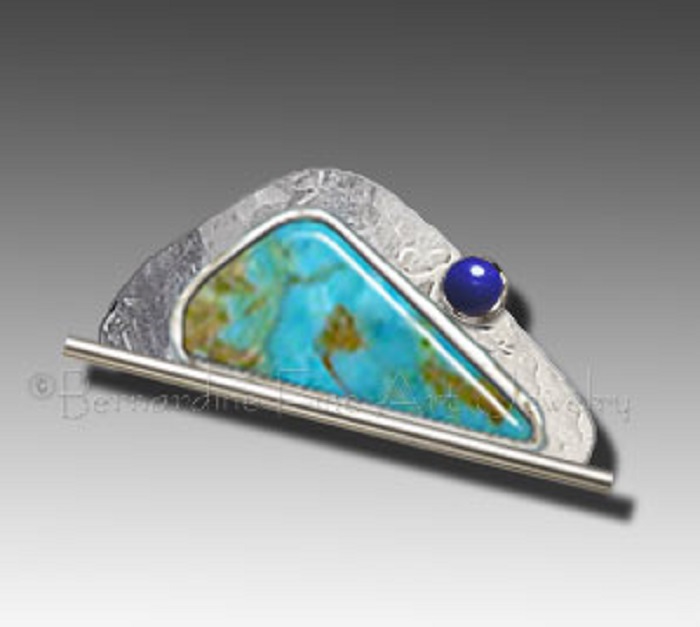
3. Silver Pin/Brooch with Turquoise and Lapis Lazuli
- price: $175
- size: 1" x 1 1/4"
- limited edition
- set in sterling silver
- hand-cut turquoise from California
- hand-cut lapis lazulifrom Afghanistan
- both gemstones have a very high polish
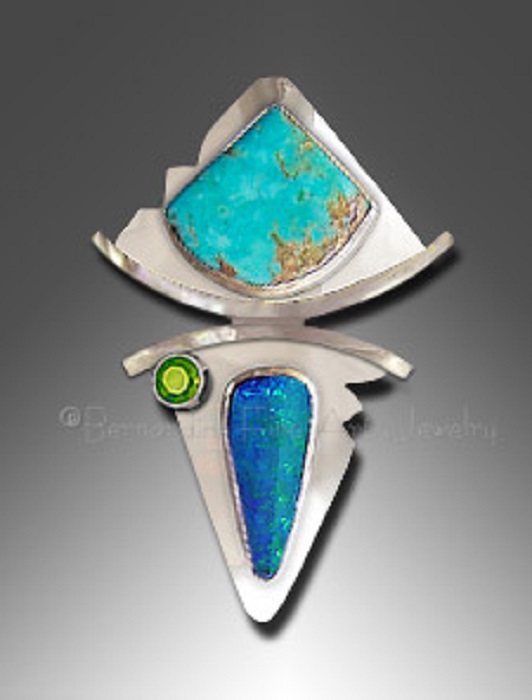
4. Turquoise Pendant with Boulder Opaland Peridot
- price: $450
- size: 1 1/4" x 1 3/4"
- set in sterling silver
- with Australian boulder opal
- with multifaceted green peridot
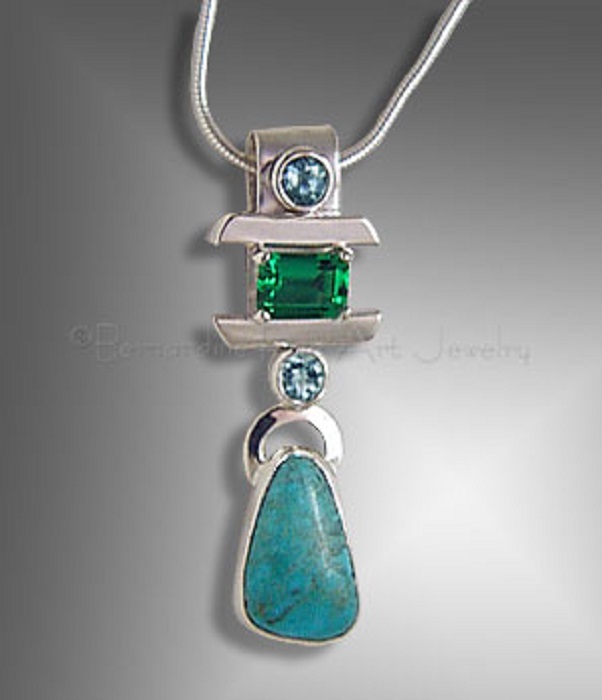
5. Custom Silver Pendant with Turquoise, Topaz, and Emerald
- price: $475
- set in sterling silver
- laboratory-grown emerald
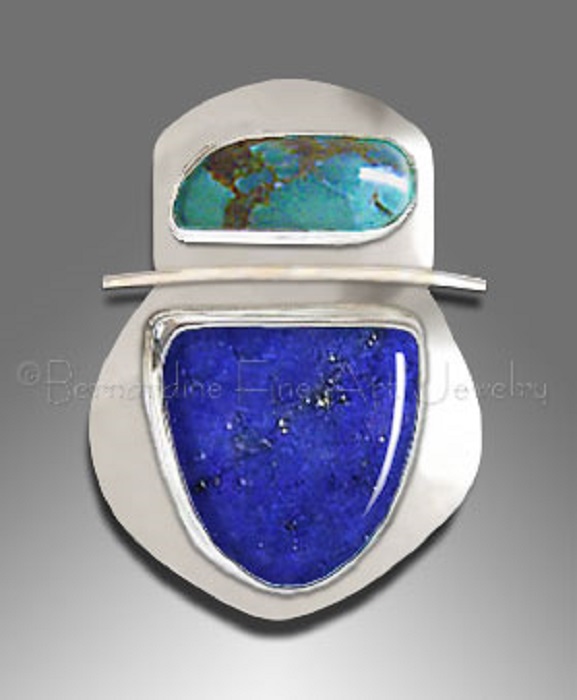
6. Turquoise Pendant with Lapis Lazuli
- price: $375
- size: 1 1/4" x 1 1/2"
- set in sterling silver
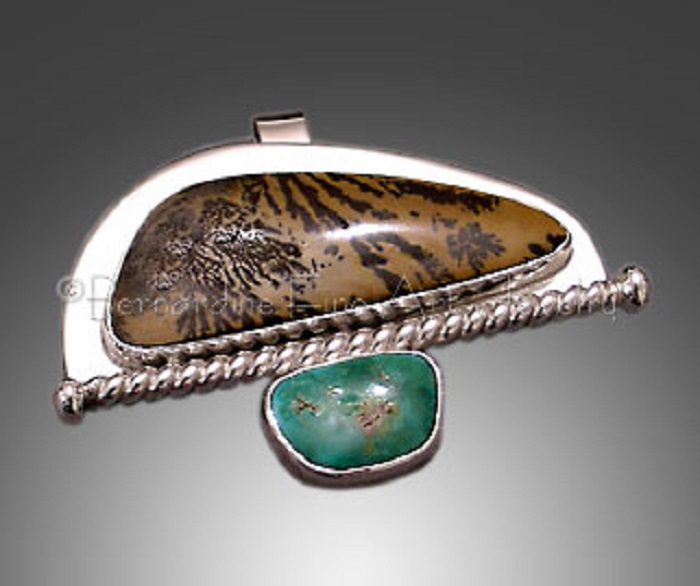
7. Silver Pin/Pendant with Turquoise and Moss Agate
- size: 1 1/2" x 1 1/4"
- set in sterling silver
- comes with a removable bail
- can be worn either as a brooch/pin or as a pendant/slide
The brown in the hand-cut moss agate cabochon matches the brown patches of the freeform turquoise cab, creating a complimentary and exciting color combination.
Timeless Turquoise Jewelry
The allure of turquoise jewelry persists through the ages, transcending trends and captivating hearts with its timeless beauty.
Whether worn as a cherished heirloom or a modern statement piece, it serves as a testament to the enduring fascination with this enchanting gem.
Indeed, the elegance of stunning turquoise jewelry makes it a timeless accessory.